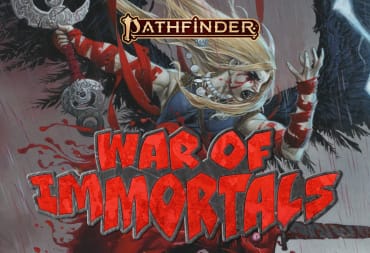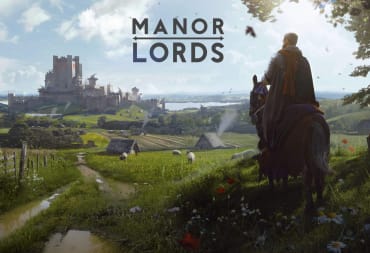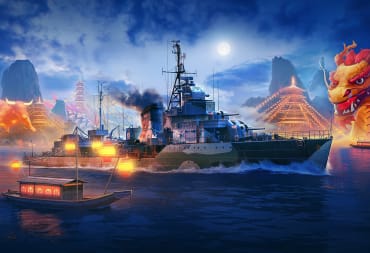My first game from WarGaming was World of Tanks. It’s a good game, and the concept is insanely simple. Take tanks from the first half of the 20th century from the major world powers of that era. Stick them on two teams on a battlefield of varied terrain, and see which team has the better tank commanders. It was fun, but after a LAN party a while back where all my friends were playing War Thunder, I decided I like my tank combat a little more dynamic than what WoT has to offer.
My enjoyment of War Thunder has resulted in me staying away from World of Warplanes as well, for the same reason. That said, we’re not here to talk about either of those games. We’re here to talk about ships—warships to be precise.
The premise for World of Warships in the same as WoT: take a set of warships from World War I to World War II era, match up warships of similar relative power on teams on maps with varied land configurations and capture points, and see which team of warships have the better commanders.
I don’t know exactly what it is about naval combat and wargaming’s overall mechanics that speaks so much to me, but I’m here to tell you I’m having an absolute blast playing World of Warships, and I think you will, too.
Matters of Scale
Scale is the word of this game. From the opening cinematic when one launches the game, to the action on the water, players are confronted with the awesome scale of everything having to do with naval combat. Destroyer class ships are smaller than their Cruiser and Battleship counterparts, of course, but even the destroyers look big, which they are, relative to everyday items in our daily lives
.
Because the ships are so big, the combat is bigger as well. What I mean by that is the range over which combat takes place. In a plane game, like War Thunder, combat in general happens inside 1km. Similar is true for tank games, though the more advanced the tanks become, the longer the effective combat distance becomes as well.
World of Warships is on an entirely difference scale. The effective weapons range of a mid-tier cruiser is 15km. Upgrade the Fire Control System, and increase the effective weapons range to 16.5 km! It’s one thing to lead an enemy with a tank shell over 1km to score a glancing hit for some damage, but leading a warship over 10km to score hits for massive damage or score a kill is another level entirely.
Stats and Measurable Attributes
When one looks at the Modules tab for a new ship, one can learn about the performance characteristics for your ship by highlighting the module in question. Firing range, maximum damage per shell type, number of primary and secondary weapon emplacements, hit points, and more for the ship.

Each of the module types may have upgraded versions. The upgraded versions give relative performance improvements over their predecessors. Ship lines from America, USSR, Japan, and Germany are included, and each is divided into tiers from 1 to 10. Each tier is more powerful than the preceding tier, as you’d expect, and depending on the tier, ships from 1 country or another might be slightly more powerful than ships of similar tier from the other countries. Every country gets a chance to shine through the push to tier 10, though, so it’s not like picking America or Japan is a choice that players are stuck with forever.
The individual ship types interact with each other in a rock-paper-scissors style, where Destroyers make life hard for Battleships, which make life hard for Cruisers, which make life hard for Destroyers. Aircraft carriers are the outlier from this paradigm. They can make any ship’s life hard at range, but once any of the other ship types has closed to effective weapons range, the carrier goes down pretty quickly.
The Anatomy of a Game
A game starts by entering the queue. Then comes a loading screen while players are connected to the game that’s just started. When a player has connected to the game, the player is taken directly to their ship on the map.

The game might be one of several types. There’s a conquest type where the teams fight for control of a limited number of control points. There’s a game type where there are only 2 control points where each of the team’s spawn, and the game ends if one team controls both the control points. There’s a game type with a control point between the two fleets, and the team that can wrest control of the point away from the opposing fleet wins.
But controlling points is the uninteresting part of the game. The interesting part of the game is destroying other warships. Each warship has Citadel areas that result in very high damage if they are penetrated by rounds enemy ships.
Ships have 2 different types of ammunition, high explosive and armor piercing. High explosive ammo can light fires on ships or incapacitate weapons, rudder, or propellers. 
Armor piercing rounds do very high damage if they hit the main hull, but do minimal damage if they hit the ship’s super structure. There’s more than a couple levels of decision making during the game that can make the difference between victory and defeat.
After the game, a recap of the player’s individual performance is presented. The player can check out how they did relative to their teammates and opponents, or get a report of detailed individual performance statistics.
Action Stations!
If you’re interested in some realistic naval combat from the early 20th century, take a good, long look at World of Warships. Once you get the hang of the ships and controls and find a ship you really like, you’ll be itching to sail the high seas.
If you'd like to participate in some Naval warfare, you join World of Warships here!
Sound off Raptor nation. Have you played World of Warships and if so, what did you think?
Have a tip, or want to point out something we missed? Leave a Comment or e-mail us at tips@techraptor.net













